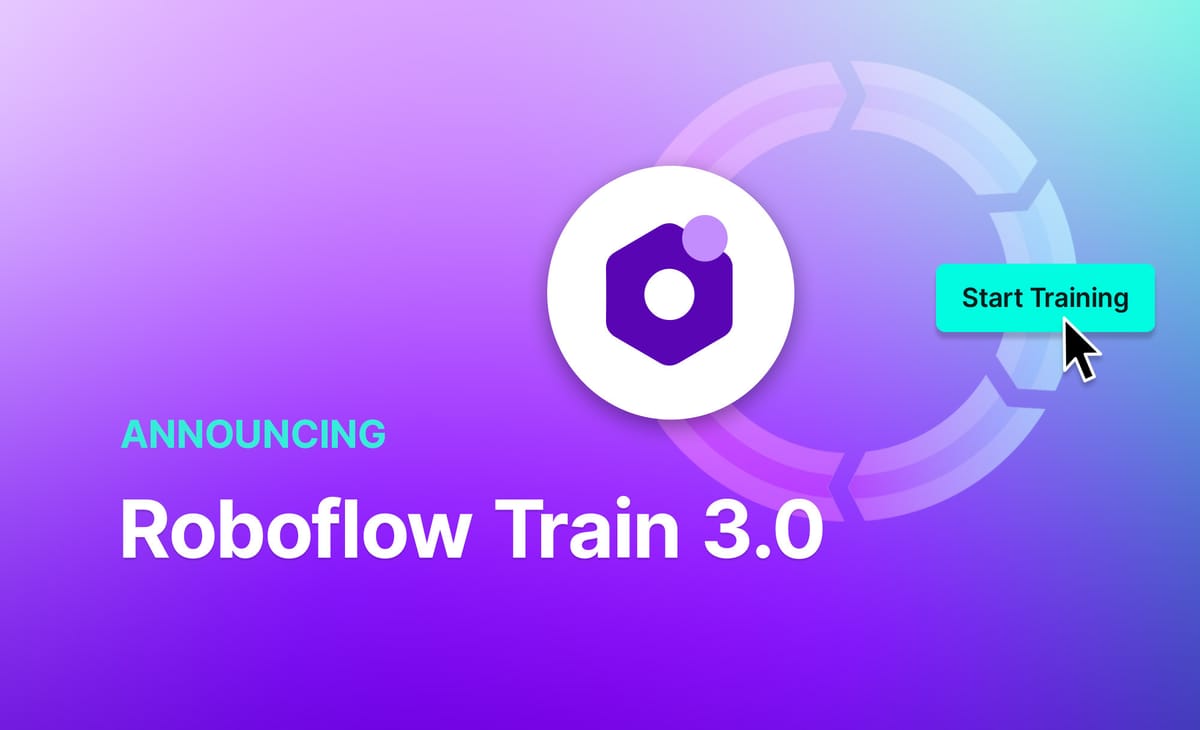
Today, we are excited to announce the launch of Roboflow Train 3.0, the third iteration of our training platform. With this change, you can expect higher rates of accuracy and faster training times on average across models you train on Roboflow, compared to the previous version of our training infrastructure. Roboflow Train 3.0 is available for object detection models.
As the computer vision industry evolves, we strive to integrate the latest and greatest technologies, techniques, and practices into our platform and tooling. With our goal of democratizing access to computer vision, we are always asking ourselves “how can we apply the latest and greatest in our product to help you get to a better model faster?”
In this guide, we will analyze the accuracy of Roboflow Train 3.0 vs. its predecessor, showing how our new training infrastructure will help you build more accurate computer vision models.
Without further ado, let’s get started!
How to Use Roboflow Train 3.0
All new object detection models trained on Roboflow will now use our Train 3.0 technology. If you have already trained a model on Train 2.0, generate a new version of your dataset in the Roboflow product to start training a model with our new infrastructure.
To train a new model, go into the Versions tab associated with your project, generate a new version if you need to, then click “Start Training” on the dashboard:
You will then be asked whether you want to use our Fast or Accurate training options:
Both of these options have been upgraded with Roboflow Train 3.0, so you are likely to see performance improvements over our previous infrastructure no matter which option you choose. With that said, we recommend training a Fast model for experimentation.
You will then be asked if you want to train from a checkpoint and you can learn more about training from checkpoints in the Roboflow documentation.
When you have configured your training job, a machine on which your model will train will be configured. When training begins, a graph will appear showing the progress of the training job. This gives you access to real-time insights as your model trains.
The time your model takes to train depends on how large your dataset is, among other factors. We will send you an email when the training job has completed and your model is ready to use. With the finished model, there are deeper evalution metrics to view as well.
Evaluating Roboflow Train 3.0
To evaluate Train 3.0, we have trained five models using Train 2.0 and benchmarked the mAP@0.5 accuracy and inference speed for each model. We then trained five models using the same datasets on Train 3.0 and benchmarked the same metrics.
Below, we show the findings from our accuracy and training time benchmarking.
Accuracy (mAP@0.5)
Across most datasets we evaluated, Roboflow Train 3.0 achieved a higher mAP than its predecessor. In some cases, the improvement was marginal. In other cases, we realized over a 20% increase in mAP.
Training Time
Training time across all datasets we evaluated was lower on Train 3.0 Fast and Accurate in comparison to Train 2.0. On average, training times were 41% faster using Train 3.0 vs. Train 2.0.
Conclusion
Roboflow is committed to upgrading its tooling as new technologies emerge that enable training more accurate models. From today, you can use Roboflow Train 3.0 to train object detection models on our platform. This version of our training model is our most accurate yet, allowing you to achieve greater performance on your computer vision models trained on Roboflow.
Cite this Post
Use the following entry to cite this post in your research:
James Gallagher. (Jul 11, 2023). Announcing Roboflow Train 3.0. Roboflow Blog: https://blog.roboflow.com/roboflow-train-3-0/
